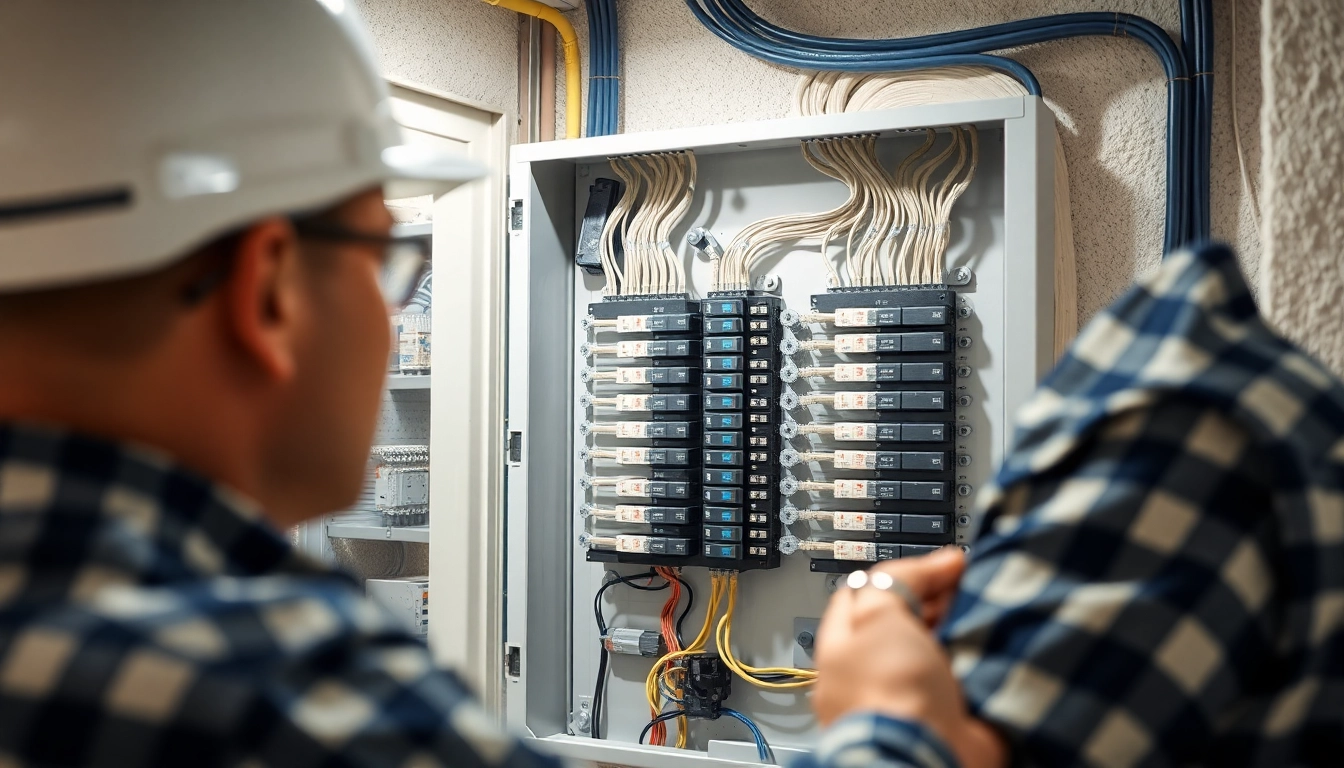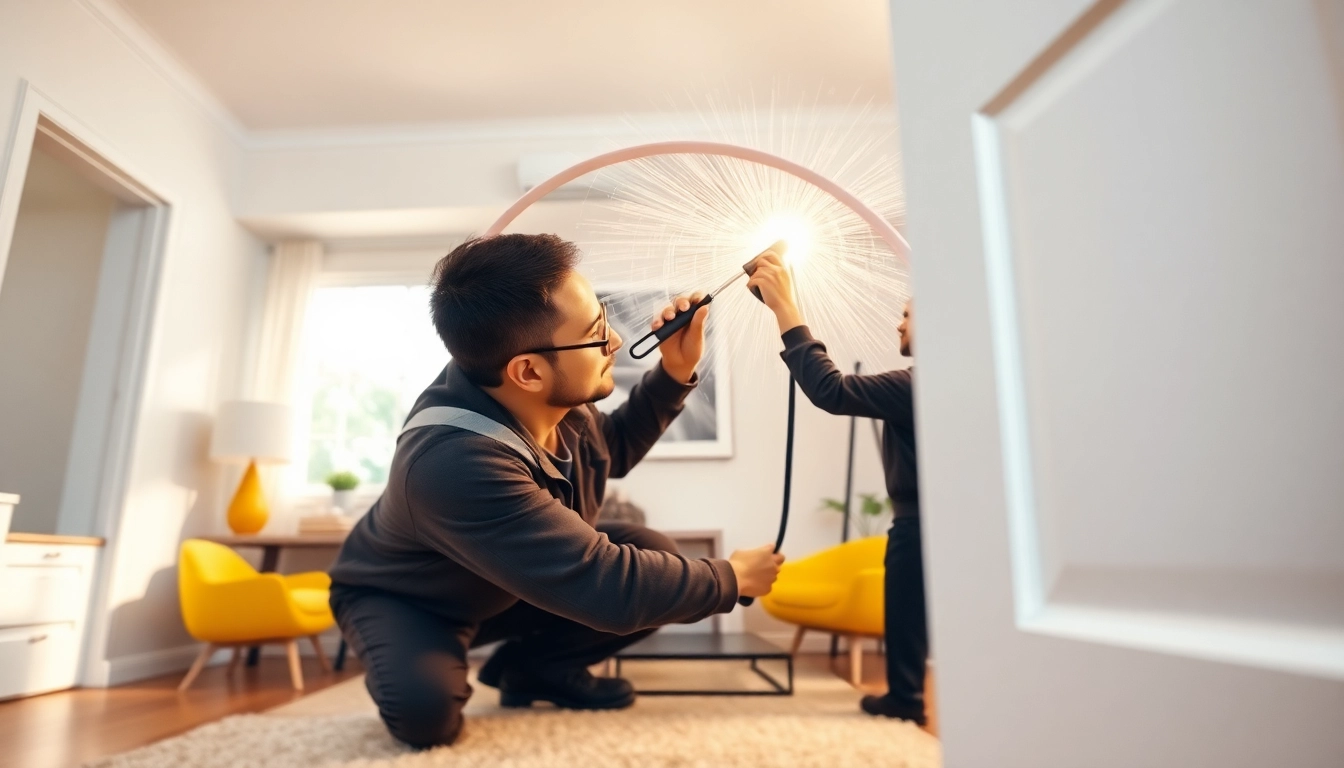Understanding Electrical Panels
In modern homes, the electrical panel is a crucial component that serves to manage the power distribution throughout the house. Also known as a breaker box, it plays a significant role in ensuring that electricity is safely and effectively allocated to various circuits. Understanding your Electrical Panel can help you identify potential issues, plan upgrades, and maintain a reliable power supply for your home.
What is an Electrical Panel?
An electrical panel serves as the central hub for electrical circuits in your home. It is responsible for directing electricity from the utility service line to different parts of the house through various circuits. The panel houses circuit breakers or fuses, which act as switches that turn circuits on and off while providing safety features by preventing overloads and short circuits.
Components of an Electrical Panel
To fully appreciate the functionality of an electrical panel, it is essential to understand its key components:
- Main Breaker: The main breaker is the most significant switch, controlling the power supply to the entire panel. It acts as a safety mechanism, automatically shutting off electricity in case of serious overloads.
- Branch Circuit Breakers: These are smaller breakers connected to specific circuits in your home. They can operate independently and provide protection for each circuit, isolating issues without affecting the whole system.
- Bus Bars: Metal bars within the panel that distribute electricity from the main breaker to individual circuit breakers.
- Neutral Bus Bar: This component carries the return current safely back to the ground, ensuring proper system efficiency.
- Grounding System: This is vital for safety, preventing electrical shock and ensuring that in case of a fault, the excess electricity has a safe pathway to the ground.
How Electrical Panels Function
The electrical panel functions primarily as a traffic control system for electricity. When power comes into the home, it travels to the main breaker, which dictates how much energy is allowed to flow to the branch circuits based on the demand.
Each branch circuit has its own breaker that applies the following logic:
- When a device is plugged in and turned on, it draws current from the circuit.
- If the current exceeds the breaker’s rated capacity, the breaker trips, stopping the flow of electricity to prevent overheating and fires.
- Homeowners can reset a tripped breaker by switching it back on, but continual trips indicate an underlying issue that requires attention.
Signs You Need an Upgrade
As homes evolve with modern appliances and technologies, many homeowners find themselves needing to upgrade their electrical panels. Here are key signs indicating it might be time for an upgrade:
Increased Power Demands
Today’s households often have a significant number of electrical devices, from smartphones and tablets to high-energy appliances like refrigerators, air conditioners, and home theatres. If you’re constantly running out of outlets or find that circuit breakers are often tripping, your electrical panel may not be able to handle your power demands. An upgrade could range from increasing the amp rating to replacing the entire panel to meet modern electrical load requirements.
Frequent Circuit Breaker Trips
If a circuit breaker trips frequently, it is an alarming sign that there may be too much load on the circuit. Each time a breaker trips, it’s a signal that the circuit is overloaded, and if it happens repeatedly, it’s essential to evaluate whether your current panel can support the electrical load in your home. Upgrading your electrical panel can avoid potential safety hazards.
Old and Outdated Panels
Electrical standards and technologies have significantly changed in the last few decades. If you live in an older home with a fuse box or an outdated circuit panel, it may not comply with today’s safety codes or efficiently manage current electrical demands. An outdated panel might not provide adequate protection against fires or malfunctions, making an upgrade crucial for safety and reliability.
Choosing the Right Electrical Panel
When considering an upgrade, choosing the right electrical panel is vital. Not all panels are created equal, and various factors must be taken into account to ensure the selected panel meets your home’s needs.
Types of Electrical Panels
There are several types of electrical panels available:
- Main Breaker Panels: These panels have a main breaker that controls all power supplied to the home. Commonly used in residential homes, they usually range from 100 to 200 amps.
- Sub-Panels: Ideal for homes with added electric demands, sub-panels help distribute power to specific areas of the house, reducing the load on the main panel.
- Transfer Switches: These enable the connection of a backup generator and ensure seamless power supply during outages.
Choosing the Right Amp Rating
When replacing or upgrading your panel, selecting the correct amp rating is crucial. Typical ratings for residential panels range from 100 to 200 amps, with newer homes usually requiring higher ratings to accommodate modern appliances. Here’s a quick guide:
- 100 Amps: Suitable for smaller homes with minimal electrical load.
- 150 Amps: A standard that suits the majority of moderate-sized homes; it often accommodates most electrical devices.
- 200 Amps: Ideal for larger homes or those with extensive electrical applications, like electric heating or EV chargers.
Panel Features to Consider
When choosing a new electrical panel, consider the following features:
- Smart Panel Technology: These panels offer features such as monitoring your energy consumption and providing alerts for potential issues.
- Surge Protection: Anti-surge features can protect your delicate electronics from damage due to power spikes.
- Accessibility: Ensure the panel is easily accessible for maintenance and monitoring.
Installation Best Practices
Once you’ve identified the need for an upgrade and chosen the right panel, the next step is installation. Electrical panel installation is not a DIY project; hiring a qualified professional is vital to ensure it’s done safely and meets all code requirements.
Hiring a Professional Electrician
Choosing a licensed electrician with a good reputation is crucial for panel installation. Verify credentials, check references, and ensure they have experience with similar installations. A skilled electrician will not only perform the installation but also inspect your home’s entire electrical system to ensure everything is up to code.
Steps to Replace Your Electrical Panel
The replacement of your electrical panel typically involves several steps:
- Preparation: The electrician will evaluate your electrical needs to determine the appropriate panel size and rating.
- Power Shutdown: The utility company will turn off power to your home to ensure safety during the installation.
- Removing the Old Panel: The electrician will safely remove the existing panel and disconnect all wiring.
- Installing the New Panel: The new panel will be installed, ensuring all connections are secure and meet electrical codes.
- Final Inspection: After installation, a final inspection ensures everything is in order, completing the upgrade process.
Safety Precautions During Installation
Electrical work can be dangerous. Here are key safety precautions to follow:
- Always use insulated tools when working with electrical circuits.
- Wear appropriate safety gear, including gloves and goggles.
- Double-check that power sources are turned off before beginning any work.
Caring for Your Electrical Panel
Upgrading your electrical panel is a significant step in improving your home’s electrical system, but proper maintenance is equally important for ensuring long-term performance. Regular care can dramatically extend the lifespan of your panel and minimize issues.
Regular Maintenance Tips
Here are some essential maintenance practices:
- Visual Inspections: Regularly examine the panel for signs of corrosion, burnt wires, or water damage.
- Keep it Clean: Dust and debris can accumulate; ensure the panel is clean and free from flammable materials.
- Document Changes: Keep detailed records of any upgrades or repairs, which can be valuable for future maintenance or resale.
Common Issues and Troubleshooting
Knowing how to troubleshoot your panel can save you time and money:
- Tripping Breakers: If breakers trip often, consider reducing the load on the circuits or consulting an electrician for potential upgrades.
- Signs of Overheating: If the panel feels warm or has a burning smell, shut off the power and call an electrician immediately.
- Non-Responsive Circuit: If a circuit doesn’t respond after resetting, it might indicate a more significant issue; professional attention is required.
When to Call an Electrician
While minor issues can often be addressed, certain symptoms require immediate professional assistance:
- Flickering lights throughout the home.
- Burning smells or visible damage to the panel.
- Frequent breaker tripping.



